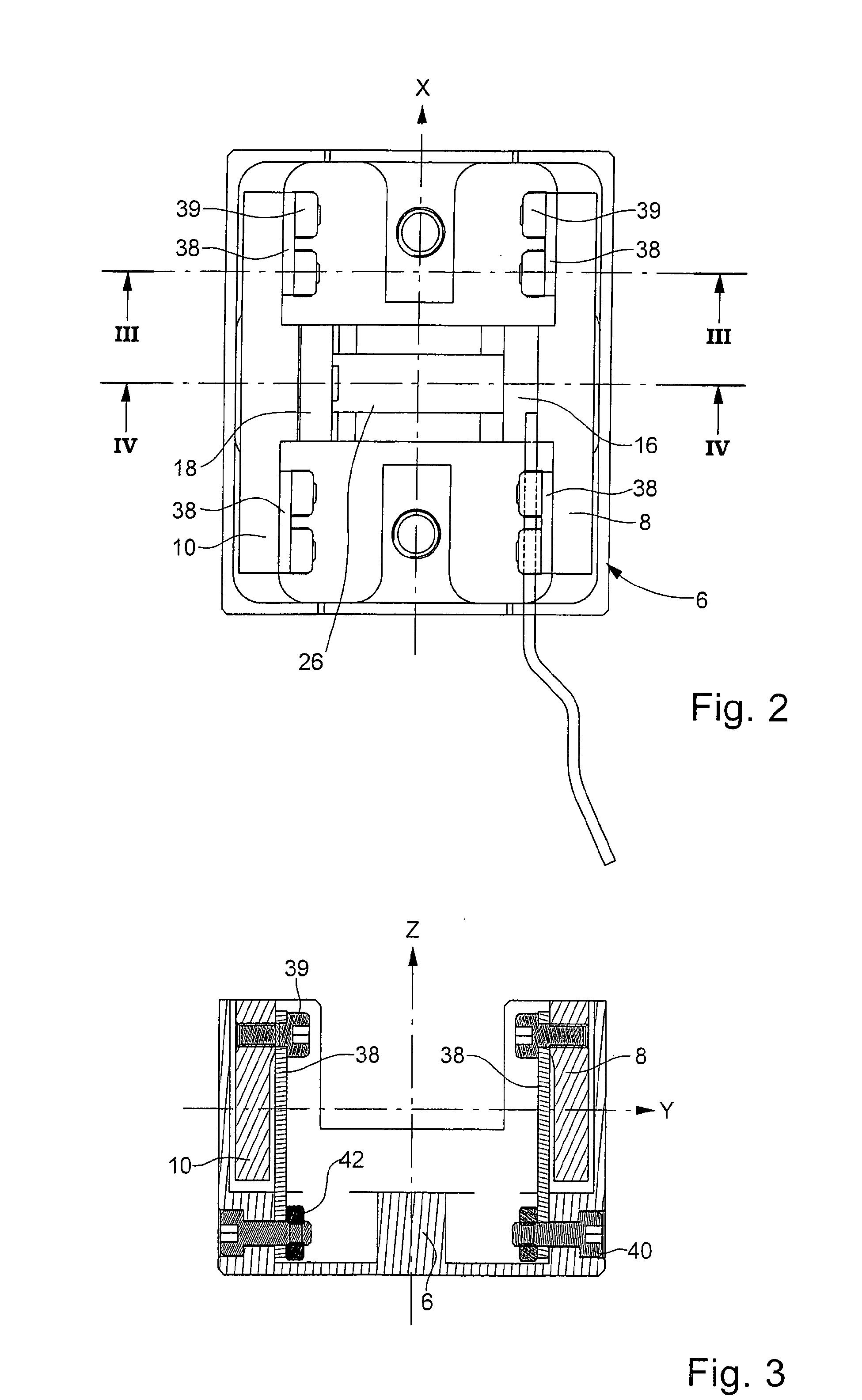Braking Device For an Electric Motor
a technology of braking device and electric motor, which is applied in the direction of generator/motor, dynamo-electric machine, electrical apparatus, etc., can solve the problems of friction on the rail and unfavorable electric motor dynamic behavior
- Summary
- Abstract
- Description
- Claims
- Application Information
AI Technical Summary
Benefits of technology
Problems solved by technology
Method used
Image
Examples
Embodiment Construction
[0017]A braking device according to an example embodiment of the present invention is described below with reference to the Figures.
[0018]Braking device 2 includes a first assembly 4 and a support 6 that forms a housing. Assembly 4 includes two brake pads 8 and 10, which are connected by connecting element 12 that extends at right angles with respect to the two brake pads and to guide rail 14, which is shown schematically in FIG. 4. Guide rail 14 defines a brake rail. A brake disk suitable for the braking function may be provided however. In the example embodiment shown, connecting element 12 forms one and the same piece together with the two brake pads. In other example embodiments, however, the brake pads may be connected to each other by different elements that are fastened to the brake pads. Each brake pad is connected to a brake disk 16 or 18. Disk 16 is provided to be fixed and is mounted on brake pad 8 with the aid of two screws 20. Disk 18 is mounted on brake pad 10 with the...
PUM
 Login to View More
Login to View More Abstract
Description
Claims
Application Information
 Login to View More
Login to View More - R&D
- Intellectual Property
- Life Sciences
- Materials
- Tech Scout
- Unparalleled Data Quality
- Higher Quality Content
- 60% Fewer Hallucinations
Browse by: Latest US Patents, China's latest patents, Technical Efficacy Thesaurus, Application Domain, Technology Topic, Popular Technical Reports.
© 2025 PatSnap. All rights reserved.Legal|Privacy policy|Modern Slavery Act Transparency Statement|Sitemap|About US| Contact US: help@patsnap.com



